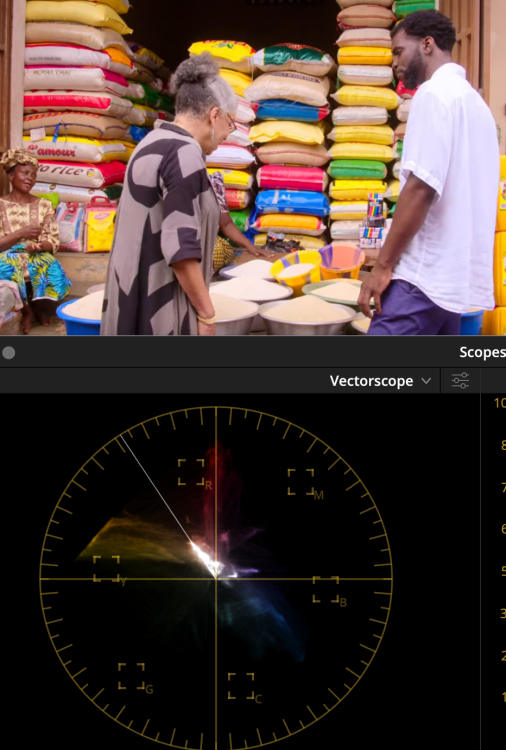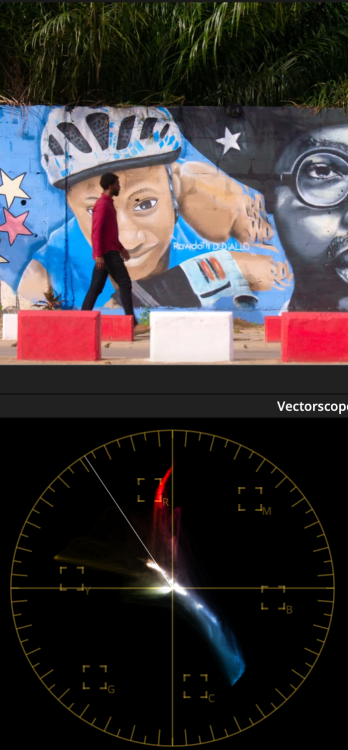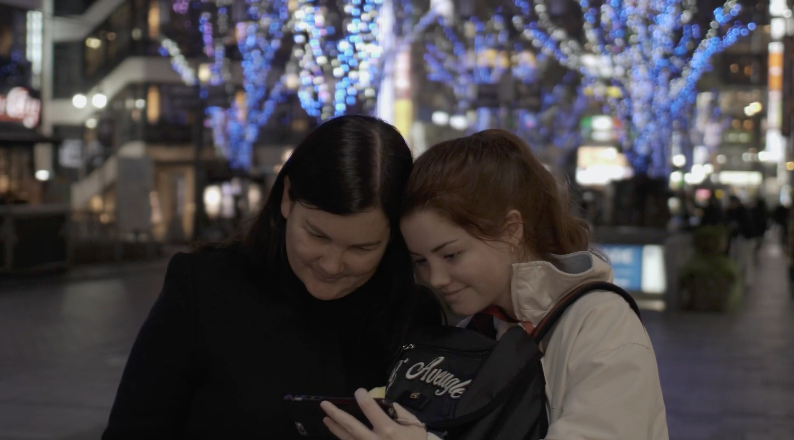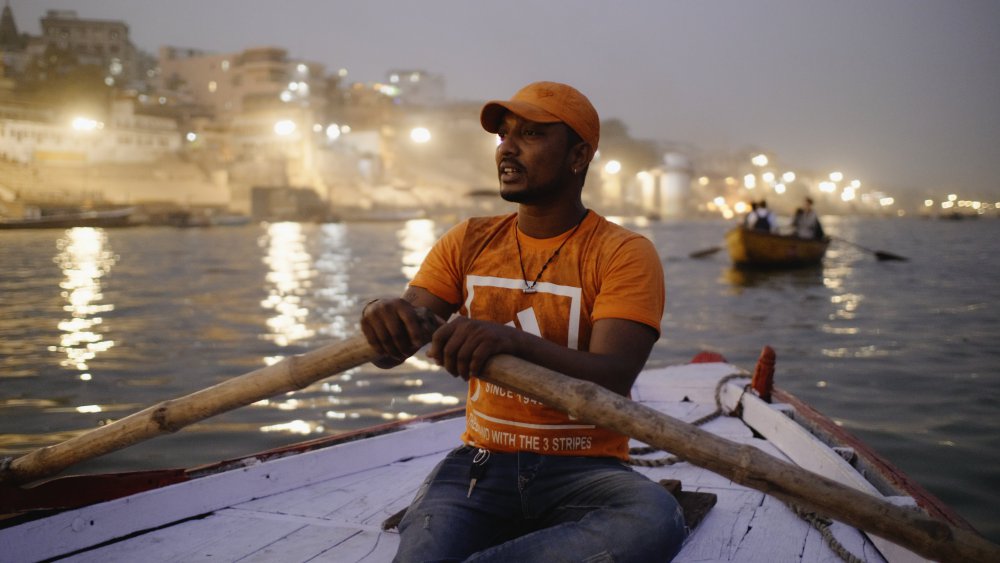Leaderboard
Popular Content
Showing content with the highest reputation on 08/18/2023 in all areas
-
I've learned a lot about film-making over the years, most of it came through discovery and experimentation, but the best film-making advice I ever got was this... See how much contrast and saturation you can add to your images This probably sounds ridiculous to you, and I can understand why it would, but hear me out. Not only is it deceptively simple, but it's hugely powerful, and will push you to develop lots of really important skills. The advice came from a professional colourist on some colour grading forums after I'd asked about colour grading, and as I make happy holiday travel videos it seemed to be a logical but completely obvious piece of advice, but it stuck with me over the years. The reason I say "over the years" is that the statement is deceptively simple and took me on a journey over many many years. When I first tried it I failed miserably. It's harder than it looks... a lot harder. The first thing it taught me was that I didn't know WTF I was doing with colour grading, and especially, colour management. Here's a fun experiment - take a clip you've shot that looks awful and make it B&W. It will get better. Depending on how badly it was shot, potentially a lot better. It took me years to work out colour management and how to deal with the cameras I have that aren't supported by any colour management profiles and where I had to do things myself. I'm still on a learning curve with this, but I finally feel like I'm able to add as much contrast and saturation as I like without the images making me want to kill myself. I recently learned how the colour profiles work within colour management pipelines and was surprised at how rudimentary they are - I'm now working on building my own. The second thing it taught me was that all cameras are shit when you don't absolutely nail their sweet-spot, and sometimes that sweet-spot isn't large enough to go outside under virtually any conditions, and that sometimes that sweet spot doesn't actually exist in the real-world. Here's another fun and scarily familiar experiment - take a shot from any camera and make it B&W. It makes it way better doesn't it? Actually, sometimes it's astonishing. Here's a shot from one of the worst cameras I have ever used: We're really only now just starting to get sub-$1000 cameras where you don't have to be super-gentle in pushing the image around without risking it turning to poop. (Well, with a few notable exceptions anyway... *cough* OG BMPCC *cough*). Did you know that cinematographers do latitude tests of cinema cameras when they're released so they know how to expose it to get the best results? These are cameras with the most amount of latitude available, frequently giving half-a-dozen stops of highlights and shadows, and they do tests to work out if they should bump up or push down the exposure by half a stop or more, because it matters. Increasing the contrast and saturation shows all the problems with the compression artefacts, bit-depth, ISO noise, NR and sharpening, etc etc. Really cranking these up is ruthless on all but the best cameras that money can buy. Sure, these things are obvious and not newsworthy, but now the fun begins.... The third thing it taught me was to actually see images - not just looking at them but really seeing them. I could look at an image from a movie or TV show and see that it looked good (or great), and I could definitely see that my images were a long way from either of those things, but I couldn't see why. The act of adding contrast and saturation, to the point of breaking my images, forced me to pay attention to what was wrong and why it looked wrong. Then I'd look at professional images and look at what they had. Every so often you realise your images have THAT awful thing and the pro ones don't, and even less often you realise what they have instead. I still feel like I'm at the beginning of my journey, but one thing I've noticed is that I'm seeing more in the images I look at. I used to see only a few "orange and teal" looks (IIRC they were "blue-ish" "cyan-ish" and "green-ish" shadows) and now I see dozens or hundreds of variations. I'm starting to contemplate why a film might have different hues from shot-to-shot, and I know enough to know that they could have matched them if they wanted to, so there's a deeper reason. I'm noticing things in real-life too. I am regularly surprised now by noticing what hues are present in the part of a sunset where the sky fades from magenta-orange to yellow and through an assortment of aqua-greens before getting to the blue shades. The fourth thing it taught me was what high-end images actually look like. This is something that I have spoken about before on these forums. People make a video and talk about what is cinematic and my impression is completely and utter bewilderment - the images look NOTHING like the images that are actually shown in cinemas. I wonder how people can watch the same stuff I'm watching and yet be so utterly blind. The fifth thing it taught me was how to actually shoot. Considering that all cameras have a very narrow sweet spot, you can't just wave the damned thing around and expect to fix it in post, you need to know what the subject of the shot is. You need to know where to put them in the frame, where to put them in the dynamic range of the camera, how to move the camera, etc. If you decide that you're going to film a violinist in a low-bitrate 8-bit codec with a flat log profile, and then expose for the sky behind them even though they're standing in shadow, and expect to be able to adjust for the fact they're lit by a 2-storey building with a bright-yellow facade, well... you're going to have a bad time. Hypothetically, of course. Cough cough. The sixth thing it taught me is what knobs and buttons to push to get the results I want. Good luck getting a good looking image if you don't know specifically why some images look good and others don't. Even then, this still takes a long time to gradually build up a working knowledge of what the various techniques look like across a variety of situations. I'm at the beginning of this journey. On the colourist forums every year or so, someone will make a post that describes some combination of tools being used in some colour space that you've never heard of, and the seasoned pros with decades of experience all chime in with thank-you comments and various other reflections on how they would never have thought of doing that. I spent 3 days analysing a one-sentence post once. These are the sorts of things that professional colourists have worked out and are often part of their secret-sauce. Examples. I recently got organised, and I now have a project that contains a bunch of sample images of my own from various cameras, a bunch of sample images from various TV and movies that I've grabbed over the years, and all the template grades I have developed. I have a set of nodes for each camera to convert them nicely to Davinci Wide Gamma, then a set of default nodes that I use to grade each image, and then a set of nodes that are applied to the whole project and convert to rec709. Here's my first attempt at grading those images using the above grades I've developed. (This contains NO LUTs either) The creative brief for the grade was to push the contrast and saturation to give a "punchy" look, but without it looking over-the-top. They're not graded to match, but they are graded to be context-specific, for example the images from Japan are cooler because it was very cold and the images from India were colourful but the pollution gave the sun a yellow/brown-tint, etc. Would I push real projects this far? Probably not, but the point is that I can push things this far (which is pretty far) without the images breaking or starting to look worse-for-wear. This means that I can choose how heavy a look to apply - rather than being limited through lack of ability to get the look I want. For reference, here are a couple of samples of the sample images I've collected for comparison. Hollywood / Blockbuster style images: More natural but still high-end images: Perhaps the thing that strikes me most is (surprise surprise) the amount of contrast and saturation - it's nothing like the beige haze that passes for "cinematic" on YT these days. So, is that the limits of pushing things? No! Travel images and perhaps some of the most colourful - appropriate considering the emotions and excitement of adventures in exotic and far-off lands: I can just imagine the creative brief for the images on the second half of the bottom row... "Africa is a colourful place - make the images as colourful as the location!". In closing, I will leave you with this. I searched YT for "cinematic film" and took a few screen grabs. Some of these are from the most lush and colourful places on earth, but..... Behold the beige dullness. I can just imagine the creative brief for this one too: "make me wonder if you even converted it from log...."1 point
-

Leica SL3 / S2H and current S1H bargains
Alpicat reacted to Andrew Reid for a topic
I had a tip off by a man who should know, that a certain Leica SL3 is coming in March next year, which will be a huge updated based on Panasonic's latest tech, which means we should see an S2H or S1H II whatever it will be called before then, perhaps even this year. The S1 and S1R will get an update too, so not long to wait for some excitement in Panasonic land. By the way I just noticed that WEX in the UK have an S1H for £1399, which is simply ridiculous. This was a 4 grand camera when it came out and is Netflix standard!! It is amazing how the market punishes Panasonic for such a high quality piece of kit. In fact I felt sorry for it and bought it. Autofocus be damned. The S2H is sure to have PDAF but will it be an 8K overkill monster and lose some of the low light creaminess that the S1H is well known for? That is the question.1 point -
..a GH5+ f0.95 lens combo is not going to get you near the same results as a 10-year old BMD pocket cam with f2 lenses. I say go use that A7S, you have one of the best low-light cams still to date.. might as well put it to good use! Coming from a BMD background shouldn't be too difficult. The main thing is there is no shutter angle so you'll have to calculate it using shutter speed. Also yeah the 8-bit codec isn't going to go very far with grade so you may wanna avoid it for low contrast night scenes, not to mention no view assist either. The biggest issue with the OG A7S is it has a very poor AWB, especially in mixed lighting scenes. There is this nasty colour cast that is kinda hard to get out in post with baked-in profiles so yeah testing would be ideal.1 point
-
I've done fruit picking for a hot second way back ages ago during a summer break when I was a uni student, you'll need to pay me more than $60/hr to go back to do that again!! (also, "$60/hour" is a bit of a lie... unless you're skilled and very fast at it, then you won't earn that much! While if you can't and you struggle, you could find yourself earning less than minimum wage)1 point
-
I think there's two competing goals in effect with this stuff - having a technically good image and having an emotionally effective image. I say competing because one wants technical perfection and the other wants aesthetically pleasing imperfections / distortions like motion blur, image texture in the form of noise, etc. The nuance that I think doesn't get explored enough is that an image doesn't get more emotional the worse the technical aspects are, and I think people often think that's what's going on, but it's that there are very specific imperfections that are aesthetically desirable. The right quantity and type of motion, the right type and quantity of noise, the right type and quantity of overall resolution in the image. I've found that often images with motion blur, out-of-focus elements (foreground and/or background), and noise often benefit from a very small-radius blur applied to the image. The purpose of this blur is to make the in-focus parts of the image less sharp, which I think aides in the overall feel. Of course, applying the blur will also do NR, so you might want to add grain back over the top of that blur too. Your approach sounds, well, sound. It borrows lots of elements from street photography, and I know that in my shooting (mostly family holidays and travel) I have learned a great deal from street photography as its main focus is in getting optimal results with often no control of the situation at all. Quite appropriate for both family holidays and informal event photography alike! In terms of dealing with the lowest light, the tradeoff is real between ISO noise, lens aperture (wider = lower ISO but softer image, stopping down = higher ISO but sharper image), and exposure time (which is dependent on subject motion). I did tests many years ago and found that it was really camera-dependent, if you're trying to eek out that last bit of performance. Obviously you can pre-focus and find a pool of good light and a good composition, but even with that I think there's an argument to be made for stopping down as it means you're going to have more chance of getting the subject in focus. I'm not sure if you've seen these images I've posted before, but I've done quite a bit of very low light video with the GH5 and Voigtlander 0.95 lenses. This was on a boat out on the water, the only lighting was from the lights on shore, which are a loooong way from the boat: Those shots are completely mis-representative of the conditions - in real life both of them were in conditions where it was dark enough that if you were alone you'd start to be concerned about your safety because you wouldn't see clearly enough to see trouble coming and if something happened other people wouldn't be able to clearly see what was happening. I've also captured lots of shots in situations where the shot was being equally lit by the persons phone (held maybe 15" from their face) as it was by the surrounding light. I have great night vision (I can ride mountain bikes off-road without lights under a full moon) and the GH5 and f0.95 lenses can see better than I can in low-light.1 point
-
This guy have pretty good insight before normal people got their a6700 One reason ZV-E1 last longer than A6700 beccause it only have 12MP sensor so less taxing on cpu than A6700 does even they are the same body.1 point
-
A6700 - FX30 sensor 👀
kye reacted to newfoundmass for a topic
I think there probably is something to sensor size being a contributing factor to overheating, but I don't think it's THE factor. I think it's the processing and overall body design. I mean, up until the S1H, GH6 and the S5II/X, Panasonic have been able to do it in both M43 and full frame without a fan. It really might boil down to Panasonic having superior processing (not just power, but more efficient coding) and body design. Once that wasn't enough to handle heating issues they added a recording limit, like in the original S5, or added the fans. Sony would get crap for putting in a recording limit, which is why I imagine they don't do it, but at least it'd be honest. At least then people would know how long they could record consistently.1 point -
Probably. Which is also why I use Panasonic. It’s a very real concern. Or rather it hasn’t been since I went over to L Mount in 2021. Not even a hint of a warning, never mind anything like a shut down and I’ve had cameras on tripods, in 40+ Celsius in the shade, direct sunlight, shooting 4k 50p for up to an hour without a single break. And that was with the original S5 which didn’t have a fan! The S1H does of course as does the S5ii which are my primary video workhorses. No fan or active cooling in some form, no dice for me these days…1 point
-
Totally agree; movement is life, and I dislike most static shots of people in action, especially playing music or dancing. Birds in flight is another one; I'd rather see the blur than have every feather revealed. Focus is a larger challenge when shooting manual lenses in low light; a lot of the photos I took in that album missed focus but nobody minded and I'd rather have an out-of-focus shot that captures an evocative moment than no shot at all. I've tried stopping down to f4 for a more forgiving depth of field, but then ISO has to go up and I'm dealing with more noise. I took a bunch of photos at a wedding reception a few weeks ago while people were dancing, also in a dark room, and there was a light show -- when I slowed the shutter speed the lights painted amazing bands and patterns across the dancers. Only one person complained that the images were out of focus. I don't worry about it too much but I certainly try to get things in focus...the best approach I've found is to position myself and focus on a spot and then take photos as people move into the zone of focus.1 point
-
$60 an hour for fruit picker during the lockdown, that was good money 😆 https://www.stuff.co.nz/bay-of-plenty/300551480/60-an-hour-to-pick-fruit-kiwifruit-industry-desperate-for-workers1 point
-
0 points













